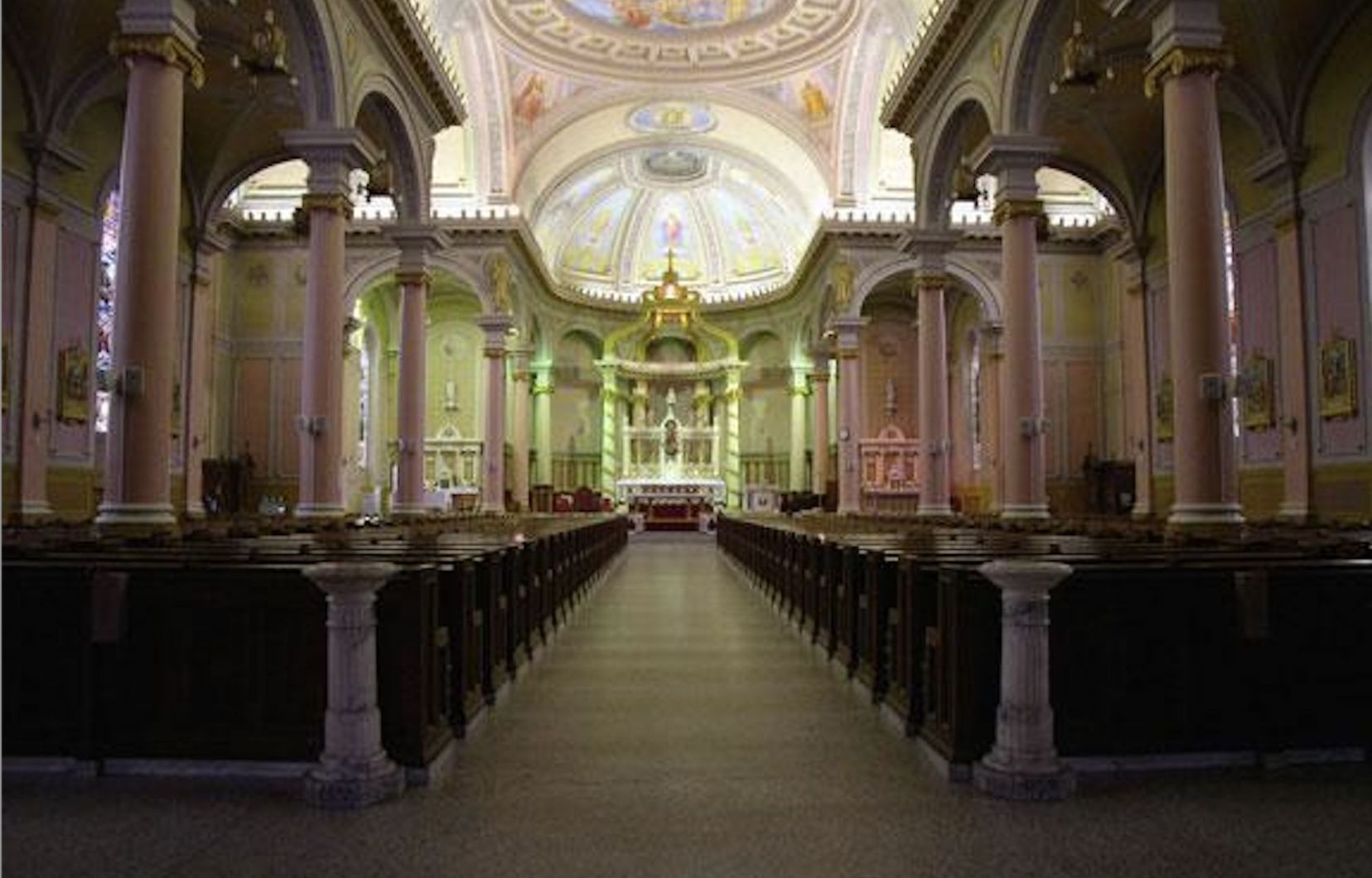In Trois-Rivières, the violent fire which destroyed the church of Notre-Dame-des-Sept-Allégresses last week took away works by the Italian-Canadian artist Guido Nincheri (1885-1973). This tireless church decorator had enhanced the interior of the church with his signature in 1925-1926. It is not only fire that threatens the work of this artist to whom many religious buildings in North America owe a lot.
The works of Nincheri housed in the Saint-Pierre church, in Shawinigan, still in Mauricie, are in a terrible state, says Paul Labonne, specialist in the work of Nincheri and director of the Musée des Hospitalières de l’Hôtel- God of Montreal.
“It’s catastrophic!” Pieces of the ceiling decor fall. » Yet it is one of the important churches that Nincheri worked on. “It’s one of the saddest cases,” says Paul Labonne. He noted, on one of the works, “a significant crumbling of the pictorial layer”. This imposing church in Shawinigan was sold in 2019, with its works of art, to a businessman who said he wanted to turn it into a museum.
In Montreal, the immense frescoes painted by Nincheri on the vaults of the Saint Michael and Saint Anthony church, a major building designed by the architect Aristide Beaugrand-Champagne, are also cause for concern. Before the construction of Saint-Joseph’s oratory, its dome was the most imposing in Montreal. The decorations that cover it are now eroded by humidity and time.
For the secretary of this parish, “many churches have important work to do, but nothing is underway here to preserve the decor”. These are mounted canvases, glued to the roof of the building, which are visibly deteriorating.
Jocelyn Groulx, director of the Quebec Religious Heritage Council, indicates to Duty that the main work to be carried out firstly concerns the exterior of the building. “The building’s health report indicates that the masonry needs to be redone. The frescoes are not in danger as such, from what I understand. » The imposing building which houses a Polish parish was originally designed to accommodate Irish Catholics.
Former information director, notably at Dutythe journalist Jules Richer, now retired, has become an approved tourist guide. He offers guided tours of Montreal, having made Nincheri’s work one of his centers of interest. The Saint Michael and Saint Anthony Church is one of its tourist attractions. “Nincheri’s frescoes were affixed on mounted canvas, less expensive than the plaster technique. Their condition is horrible. Not only are they dirty, but they are falling to shreds,” he says.
From the ground, visitors can see the numerous losses and damage to the entire dome.
The emblem of a neighborhood
“Nincheri is often presented as the Canadian Michelangelo,” indicates architectural historian and UQAM professor Luc Noppen. “This reference to Michelangelo does not hold water, but Nincheri still achieved important and more personal things through his studio production. »
The artist remains unknown to the general public. “He is not an artist for whom it is easy to mobilize, even if he has done things with his hand which deserve attention,” underlines Luc Noppen.
For Luc Noppen, the Saint Michael and Saint Anthony Church deserves public consideration. “I’ve always said it’s a superb building. If the cathedral of Amos, designed by the same architect, is important, this church is too! Everything Beaugrand-Champagne has done is original. As long as we save the church, we could well save the frescoes too. »
In front of Saint Michael and Saint Anthony, one of the most imposing buildings in the Mile End district of Montreal, many imagine themselves in the presence of a mosque. “Beaugrand-Champagne did not make two buildings alike. He plays with the return of historical styles,” comments Luc Noppen. In this case, he considers the beginnings of Christianity, while Moorish architecture greatly influences the construction of religious buildings.
A notable immigrant
Between 1920 and 1960, Guido Nincheri decorated more than a hundred places of worship in the United States and Canada. A graduate of the Academy of Fine Arts in Florence, this Italian immigrant settled in Montreal almost by accident.
During a trip which was to take him, in the company of his wife, to South America, the artist remained trapped in the United States, while a rain of fire and iron ravaged Europe.
He was supposed to go to Argentina, but the conflict decided otherwise. After spending time in the United States, unable to continue his journey south, he will head north. He settled in Montreal.
From his workshop, he imagines decoration plans for establishments. He painted frescoes by the hundreds. As a master glassmaker, he also produced thousands of stained glass windows. His workshop, located in the Hochelaga-Maisonneuve district, will employ up to ten workers.
